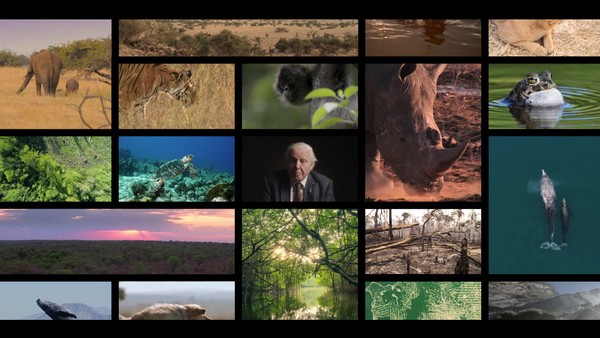Sustainable Development Goals > Planet
LIVING SEAWALL
whiteGREY SYDNEY / VOLVO / 2019
Awards:
Overview
Credits
OVERVIEW
Background
Volvo is committed to building a sustainable future.
By the end of 2019, Volvo Cars will remove single-use plastics from all its offices, canteens and global events. Their commitment to electrification sees a goal of putting 1 million electric cars on the road by 2025.
As a founding member of the UN Global Compact and an active supporter of the UN Environment’s Clean Seas campaign, Volvo’s also has a long-term commitment to ocean sustainability.
More than half of Sydney’s shoreline is artificial. Rich, vibrant habitats have been replaced with manmade seawalls and degraded by pollution. Over 50% of our native mangroves have been lost, and these mangroves play a large role in the health of the ocean by filtering particles and pollutants.
How can we use Volvo's divergent thinking to attract marine life that filter and clean the water? And open a broader conservation about Volvo's long-term commitment to sustainability?
Describe the cultural/social/political/environmental climate in your region and the significance of your campaign within this context
Luxury is changing. For Volvo buyers, it’s shifted from an extravagant statement of wealth to a more conscious expression of intelligence – in the brand and product itself, and their own for choosing it. Modern luxury is having a brand that shares the same values as you. And in Volvo’s case, it’s striving for a sustainable future.
There’s a Swedish word, omtanke, that means ‘caring’ and ‘consideration’. That’s what the Living Seawall is all about.
A radical and divergent style of thinking that showcases what Volvo do. And who Volvo are.
Describe the creative idea
The Living Seawall. A series of tessellating marine grade tiles designed to mimic the root structure of native mangrove trees.
By adding complexity to an existing seawall, the Volvo Living Seawall turns a harmful, man-made structure into a viable marine habitat. This aids biodiversity and attracts filter-feeding organisms that actually absorb and filter out pollutants – such as particulate matter and heavy metals – keeping the water ‘clean’. The more organisms we have, the cleaner the water.
For the next 20+ years, scientists at the Sydney Institute of Marine Science will monitor the Volvo Living Seawall and use it as a tool for coastal research, local school education and to open a broader conversation on ocean sustainability.
Describe the strategy
Redefining luxury.
Luxury is changing. For Volvo buyers, it’s shifted from an extravagant statement of wealth to a more conscious expression of intelligence – in the brand and product itself, and their own for choosing it. Modern luxury is having a brand that shares the same values as you. And in Volvo’s case, it’s striving for a sustainable future.
There’s a Swedish word, omtanke, that means ‘caring’ and ‘consideration’. That’s what the Living Seawall is all about.
A radical and divergent style of thinking that showcases what Volvo do. And who they are.
Describe the execution
Designed to mimic the root structure of native mangrove trees, the Living Seawall adds complexity to the existing seawall structure and provides a habitat for marine life. This aids biodiversity and attracts filter-feeding organisms that actually absorb and filter out pollutants – such as particulate matter and heavy metals – keeping the water ‘clean’. The more organisms we have, the cleaner the water.
Partnering with the Sydney Institute of Marine Science and Reef Design Lab the Volvo Living Seawall was launched at an event in Sydney Harbour, gaining PR coverage from the traditional media and a completely new audience with strong influence in design and sustainability.
Redefining outdoor advertising.
The project gave Volvo a permanent, out-of-home placement in a landmark location, but importantly gave an opportunity to showcase its divergent approach and credentials as a contemporary premium brand.
Describe the results/impact
Volvo is being talked about in a completely different way. Not only by traditional media, but also publications with strong influence in design and sustainability. The earned media coverage was over 86.4 million. On launch day the project was covered multiple times across over the main broadcasters reaching four million viewers - 16% of the Australian population.
The tiles will remain a landmark in Sydney Harbour for the next 20+ years creating a habitat for organisms that clean the ocean. While generating significant scientific research that will inspire how we can rethink damaging, albeit necessary, human-built infrastructure.
The campaign generated large spikes in intended consideration, playing a major part in driving interest in Volvo.
- 136% consideration uplift of those who recalled the creative
- Unique traffic to Volvo Australia’s website up 86% year-on-year
- Car configurator usage up 31% year-on-year
- Test drive requests up 10%
More Entries from Life below Water in Sustainable Development Goals
24 items
More Entries from whiteGREY SYDNEY
24 items
